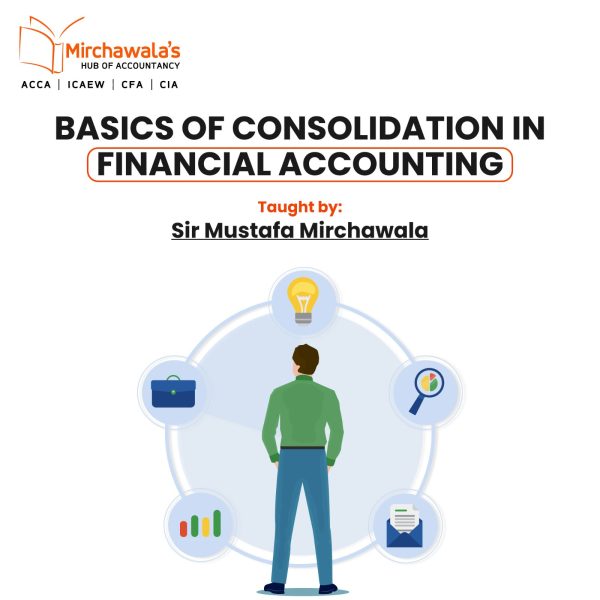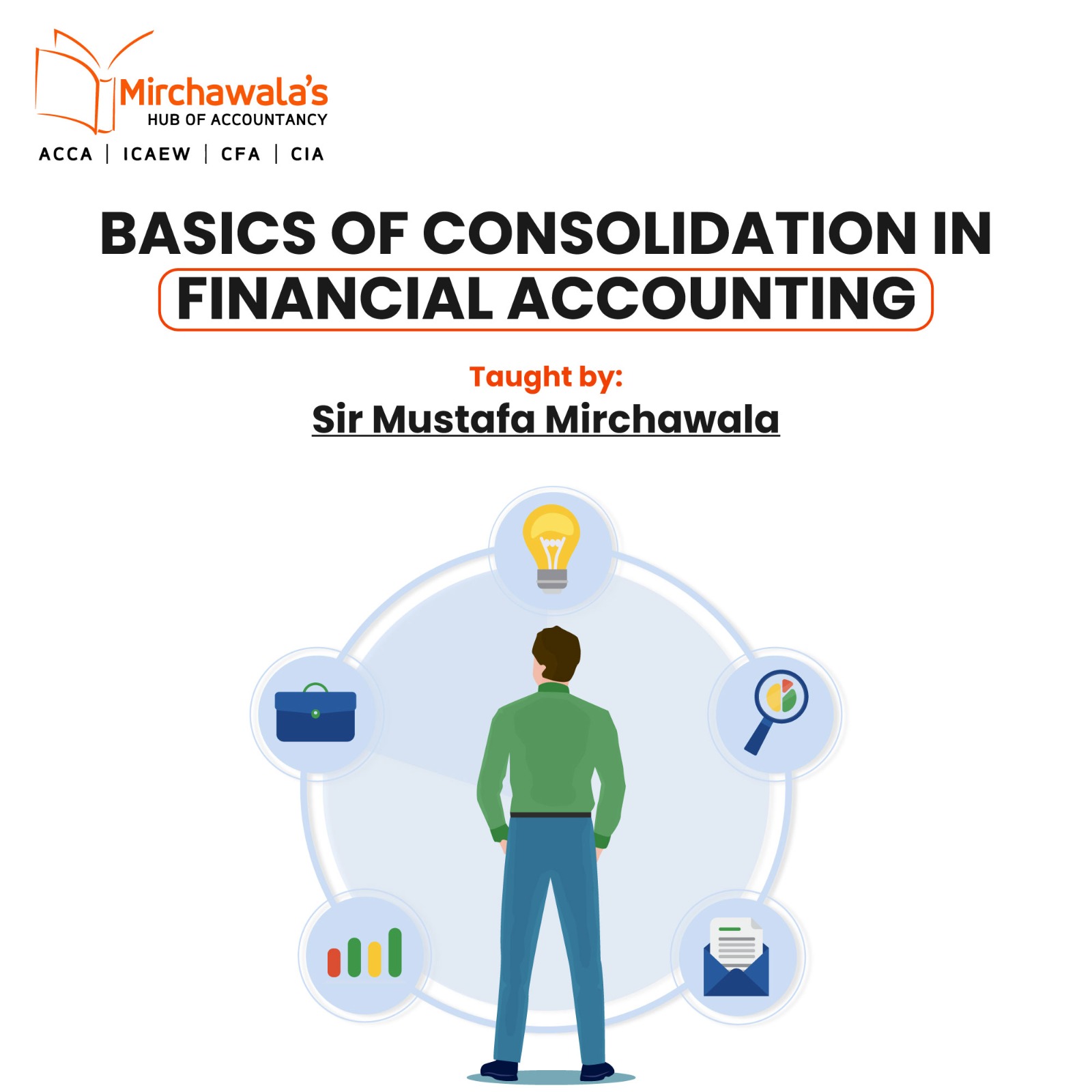The Basics of Consolidation in Financial Accounting
A lot of students get scared when it comes to consolidation in financial accounting, as there are big numbers involved and so many financial statements and income statements—hilarious enough to give a student a solid jumpscare. He possesses the superpower of making sure that students have grasped and retained every single concept of the course. Not a single concept, theory, or calculation is powerful enough to stand tall against Sir Mustafa’s magic spell of simplification.

At Mirchawala Hub Of Accountancy, students have the luxury of the teacher being available for them 24/7, which is rarely the case in other institutions. Here, teachers devote their full strengths and capabilities to accommodating the comfort of their students.
What is Consolidation in Financial Accounting?
In financial accounting, consolidation is used to combine the financial statements of a parent company and a subsidiary company. The company that acquires the shares of another company is the parent company, and the acquired company is a subsidiary. The reasons why one company might buy shares of another are synergy, external growth, diversification, tax benefits, risk management, and entry into foreign markets. The parent company may own all of the shares of the subsidiary, or just the controlling shares, with the others being owned by other noncontrolling interest (NCI) parties.
Consolidation eliminates any transaction between parent and subsidiary or between the subsidiary and NCI. The combined transactions only involve transactions with third parties, and Company C continues to produce separate financial statements.
This brief article looks at how to prepare a consolidated statement of financial position. Consolidated financial statements are often referred to as ‘group accounts’. Learn more
This concept is easier to understand with an example:
Assume there is a company, Pablos. Co., which acquires all of the shares of Roha. Co. for the price of Rs. 70 000, and the market value of Pablos. Co. is Rs. 100 000. So in the consolidated financial statements of Pablos. Co, the net value of assets will be written as $170, 000. So Roha Co. became a subsidiary of Pablo’s Co.
What is good will?
When the parent company buys the running business of the subsidiary, it also purchases its goodwill, which is computed on the acquisition date: the date when the shares of the subsidiary were bought. It is the intangible asset of the company, which represents its reputation, value, and relations.
It is calculated by subtracting the fair value of the subsidiary on the acquisition date from the cost of investment into the subsidiary.
Non-controlling interest
When we buy more than 51% of shares of the subsidiary company, we get the majority shares, but the rest of the shares are owned by other parties, who do not have any say in how to run the organization, and that is why they are known to be the non-controlling interest.
In the consolidated statement of financial position, NCI is reported at fair value. So while calculating goodwill, we also have to adjust the subsidiary company’s post-retained earnings shares in the NCI calculation.
FAIR VALUE ADJUSTMENT: In many instances, the value of property and plant equipment in the subsidiary company’s SOFP is not recorded at the value it is usually worth because the value either rises or falls as time passes. So it is of a lot of significance that the value of net assets is adjusted for the current assets of the consolidated SOFP and the goodwill. And it is the responsibility of the parent company to do it.
INTERCONNECTED SALES BETWEEN PARENT AND SUBSIDIARY : A lot of the time, sales are going on between the parent and the subsidiary, and consolidation of financial statements requires intercompany balances, transactions, income, and expenses to be eliminated in full.
Parent and subsidiary should be trading as if they were one entity. Therefore, the amount parent or subsidiary owes to each other should be canceled out from their payable and receivable.
UNREALISED PROFIT: When inter-company trade happens, the profit the parent makes by selling to the subsidiary is the profit they have made by trading with themselves, so this is the profit that should be eliminated from consolidated inventory as well as consolidated reserves of p.co
The profit made by the subsidiary should be eliminated by the Subsidiary’s post-retained earnings as well as its inventory.
MID-YEAR ACQUISITION: Often, companies do not purchase other companies at the end of the reporting year. So with mid-year acquisitions, the components of the statement of financial position are adjusted by dividing the pre-acquisition retained earnings throughout the year.
CONSOLIDATION OF INCOME STATEMENTS: The consolidation of a statement of profit and loss is done on the same grounds as a statement of financial position, however, it is less complicated than the latter. It presents the financial information of the company under a simple single line.
The process is as illustrated:
- Add the revenues and expenses of P.co and S.co. If the acquisition is done mid-year, then proportions are adjusted according to that.
- Remove all the inter-company sales.
- Eliminate all the unrealized profit held in stock in the inventory.
- Calculate and assign the profits to noncontrolling interests.
In conclusion, to make the right and informed decisions about investments, the owners of the company, i.e. the shareholders, would have to have sound knowledge of the interpretations of both companies. So, consolidated accounts simplify this task and eliminate all the complexities for shareholders to make the right decisions about their investments, and managers on how to run the company.
Group accounts are manifested as a critical topic in the FA paper and a lot of students need help to grasp multiple concepts and apply all of them at once to the questions.
However, Sir Mustafa Mirchawala makes sure that every student, no matter how smart or weak, when leaving the lecture is aware of all the concepts and has a swift grip and confidence that will be able to do it, no matter what. A little bit of consistency and constant practice is the keys to unlocking your success in this chapter.
Written by: Roha Pabal Bright student of Mirchawala’s Hub of Accountancy








